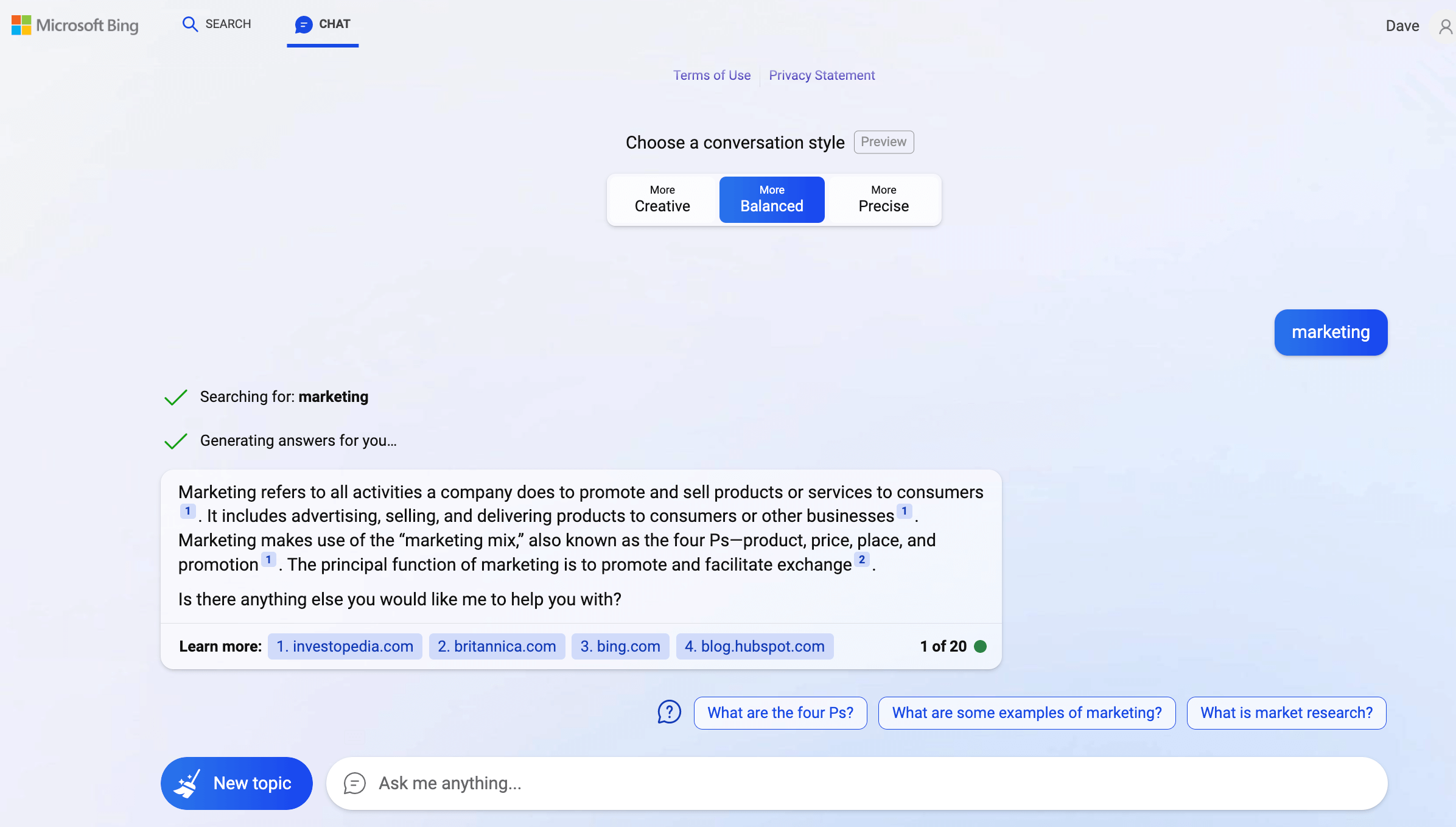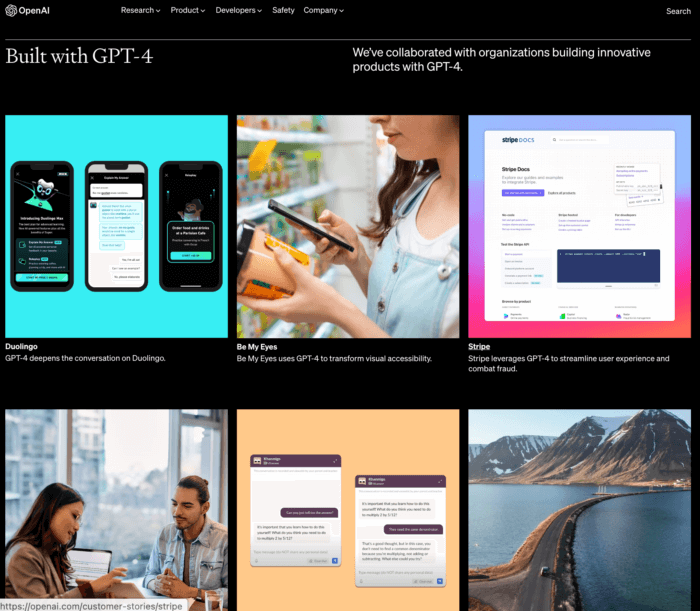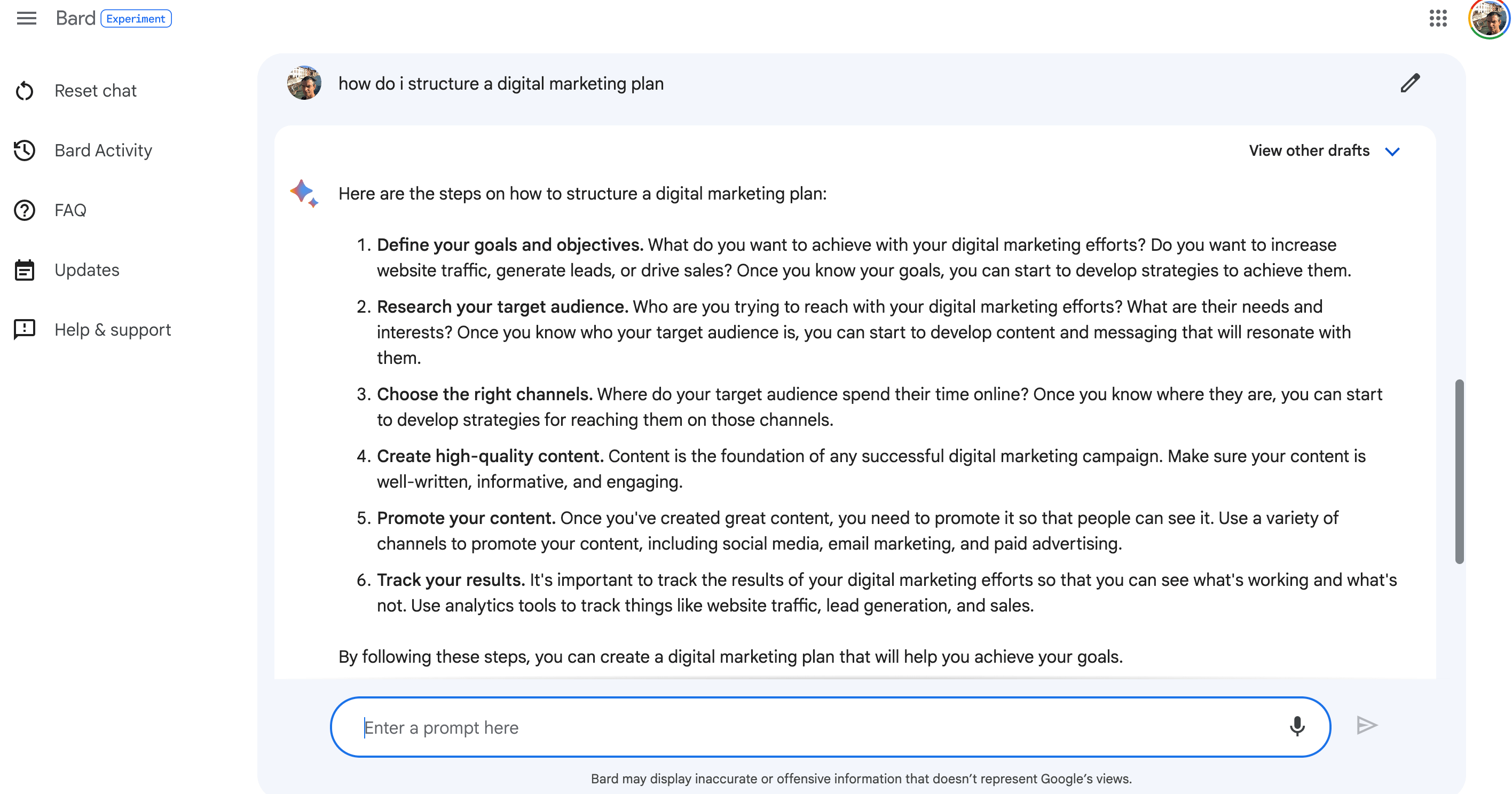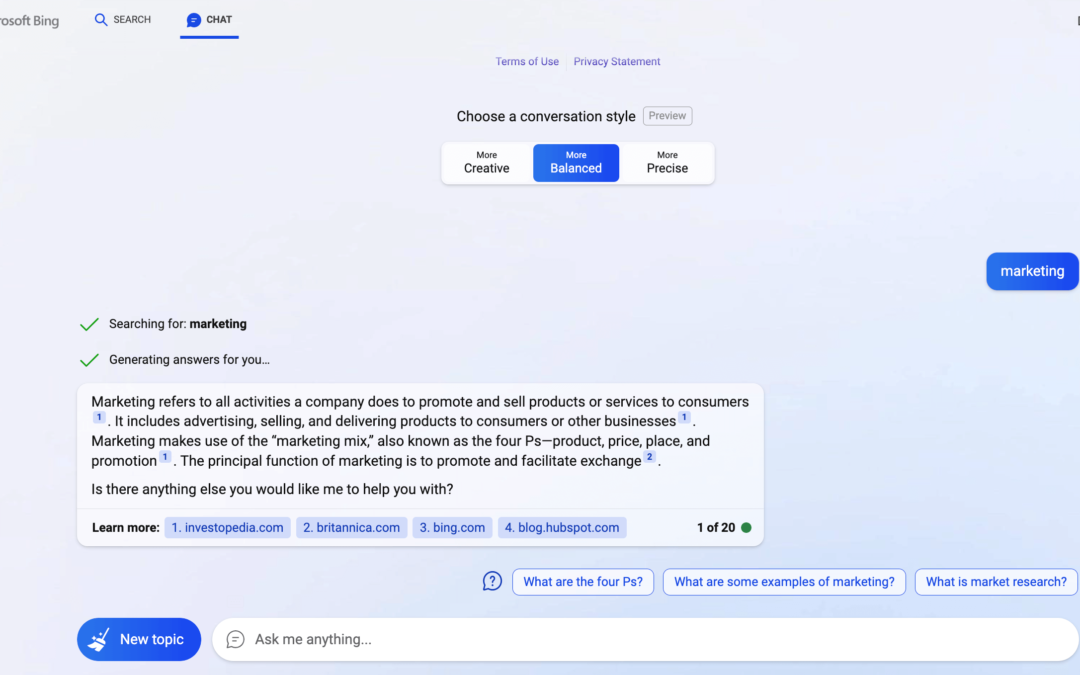How do the latest updates to ChatGPT including GPT–4, AutoGPT, Plug-ins and ChatGPT Plus boost its potential for marketers?
Since I originally wrote an article on Using ChatGPT for marketing just after ChatGPT launched, there has been a whirlwind of developments from OpenAI and their partners. For marketers who are busy with their day job, this can be bewildering and you can miss some of the key developments, so here I’ll summarise some of the main developments in a brief timeline and how significant I see them to be.
Members can read about other ‘need-to-know’ key digital marketing developments in our regularly updated latest Digital Media updates tracker.
As of April 2023, the main developments since the launch of ChatGPT relevant to marketers and businesses have been.
1 ChatGPT features integrated into Microsoft Bing
This seemed to happen a long time ago now, but was actually in February. I got access to the new Bing integrating ChatGPT in March after joining the waitlist when it launched in early Feb. My first impression of Bing chat-based search was… It’s too slow / laggy = unusable.
My second impression was that it’s cool to integrate the sources of info with links to them and an improved experience on ChatGPT, but my immediate third impression was that the recommendations to sources that are powered by Bing search and are less relevant / poorer quality sites than Google would recommend – which is why ‘everyone’ uses Google compared to Bing right – it gives a better experience all round. The recommendations if you ask it a question as part of a dialogue are different to ChatGPT and less insightful.

So underwhelming all-in-all… That said, some of the performance issues have been reduced although you still have to wait ten plus seconds for a response which people aren’t used to. Still, I do now have Edge ready to use in my task bar and use it for understanding concepts that are new to me and it’s good to have continuous access.
However, 1 million joined the waitlist for new Bing in the first 48 hours, so some interest, but not as high as ChatGPT. Microsoft has seen a small gain in its market share for its Edge browser which incorporates it.
2 New Open AI business services and upgrades
A lot of need-to-know developments recently all of which expand the commercial potential for deploying AI in your business.
GPT–4 released
On March 14, 2023, OpenAI released the large language model GPT–4 which is now available within ChatGPT, so improving its performance, but with the caveat that GPT–4 retains some of the same problems of “hallucinating” answers. It also can take images as input, so they can be described.
The claims from OpenAI that GPT–4 offers human-level performance on various professional and academic benchmarks are amazing: it passes a simulated bar exam with a score around the top 10% of test takers; in contrast, GPT–3.5’s score was around the bottom 10%…
This level of improvement has led some to suggest that we’re rapidly approaching a real-world AGI, since when Microsoft Research tested the model behind GPT–4, they concluded that “it could reasonably be viewed as an early (yet still incomplete) version of an artificial general intelligence (AGI) system.
Plugins for ChatGPT
In March OpenAI also launched plug-ins for ChatGPT. Some have made the claim that OpenAI has had its app store moment and is now competing with the Apple and Google App Stores. While I don’t think this is the case, what is really interesting for businesses thinking about commercial products built on ChatGPT is that the first plugins are from well-known brands including Expedia, FiscalNote, Instacart, KAYAK, Klarna, Milo, OpenTable, Shopify, Slack, Speak, Wolfram, and Zapier.
Clearly there now options to use ChatGPT to add to the online brand value proposition and this should be a big wake up call for businesses who aren’t considering this.
The advent of GPT–4 has also showcases new business applications including Duolingo improving its language learning apps, Morgan Stanley wealth management deploys GPT–4 to organize its knowledge base and Stripe leveraging GPT–4 to streamline user experience and combat fraud.

ChatGPT Plus service
The other main recent announcement from Open AI was the launch of ChatGPTPlus in February. This is available for $20/month, and subscribers will get these benefits
- General access to ChatGPT, even during peak times (many users are unable to use ChatGPT during peak times currently)
- Faster response times
- Priority access to new features and improvements (such as GPT4)
This heralds the end of the free, unlimited use of ChatGPT which was always positioned as a preview. We can expect other tiers will be introduced in time. If you’re frustrated at the continual lockouts in ChatGPT this is a good option particularly since it gives a fixed fee unlike the per query fees if you were using the Playground to get access as I have been.
The fee and likely wider future fees also potentially increases the marketing tools for ChatGPT which we cover in the last section.
3 The AutoGPT agent
There is a huge amount of media hype about this, much of it misplaced, since it highlights the potential of autonomous agents that will work on tasks automatically. While this is exciting, what many media and LinkedIn commentators, who don’t understand the tech behind AutoGPT, is that this isn’t a new product, feature or service from OpenAI enabling ChatGPT using GPT–4 to complete different tasks, rather it is a clunky technology from one developer currently only available to developers who manually install it from the GitHub code repository. So, it’s more of an independent technology preview. However, it has engaged many developers with its potential, becoming the top trending download on Github.
This Venturebeat summary giving the background to the AutoGPT launch and adoption by developers is the best and most balanced timeline I’ve seen quoting Nvidia AI scientist as saying: “I see AutoGPT as a fun experiment, as the authors point out too. But nothing more. Prototypes are not meant to be production-ready. Don’t let media fool you — most of the ‘cool demos’ are heavily cherry-picked.” I agree! Real-world usage seems to show that the tasks set aren’t completed – see this AutoGPT timeline summary.
The excitement about AutoGPT is that the user doesn’t have to prompt the AI as you currently do with ChatGPT. Effectively the script prompts ChatGPT for you. As I showed in my article on the best prompts for using ChatGPT for digital marketing, successful use of ChatGPT is in large part down to the skills of the marketer in writing the prompt.
For marketers, the impact of AutoGPT is more in showing what AI the future will offer in the future and that’s autonomous bots that can be set a task to research a topic and select and buy products, such as find and buy the cheapest flight from X toY. In fact, Paul Smith and I wrote about this in our first 2001 edition of Digital Marketing Excellence as a future option, to me it’s still years into the future for widespread adoption.
4 Privacy limitations of ChatGPT
The media have jumped on this story to portray ChatGPT as dark and scary, particularly when Italy banned ChatGPT until it complied with EU GDPR privacy regulations. However, if you look at what ChatGPT does, it’s not dissimilar to most media sites i.e. when you sign up, the privacy policy allows your IP address, browser type and settings all be stored and all data interactions you have with ChatGPT, and your wider internet browsing activity. It looks likely that ChatGPT will return to Italy soon as it makes some adjustments.
5 Launch of Bard and Maji project by Google
Alongside these developments from OpenAI and Microsoft, Google have not rested on their laurels, reportedly issuing a ‘code red’ to divert resources to counter ChatGPT. Back in February Google tried to steal Microsoft’s Bing ChatGPT launch thunder by pre-announcing Bard. You’ll remember this backfired when Bard got a cosmological fact wrong. Many announcements have followed to help Google maintain its share price given the perceived competition, although I think we’re a long way from seeing Google’s search impressions falling just yet.
We’re now getting closer to a release with a domain you can access and join me on the waitlist: https://bard.google.com/
Google announced Bard in a blog post on the 21st March and i now have access. You can see the similarity to ChatGPT. I haven’t done a detailed review, but based on this comparison with ChatGPT which presented a structure for a digital marketing plan, Google’s Bard has failed to sense my intent…

It was also announced in April that Google is working on A NEW SEARCH ENGINE as part of Project Maji – something else for us to track. The new search model in this search engine would “learn what users want to know based on what they’re searching and offer lists of preselected options for objects to buy, information to research and other information.”
6 Increased usage of other AI writing tools for marketing
The attention on ChatGPT has also prompted marketers in larger organisations with budget to invest in paid services to look at alternatives to ChatGPT as part of their response to the opportunities of Generative AI. Some of the best established tools are:
- Jasper.AI – Offers to write long content such as blog posts, reports email and stories in 25 languages
- Writesonic – Offers AI article ideas or posts, landing pages, SEO articles, Facebook and Google Ads
- Hyper Writer – Includes a Blog creator, Facebook and LinkedIn Post Creator and Email responder
Note that we don’t use these at Smart Insights since we’re trusting to our logic and experience for now, so I can’t endorse these.
Members can read about other ‘need-to-know’ key digital marketing developments in our regularly updatd latest Digital Media updates tracker.

